#300 b.c.
Text
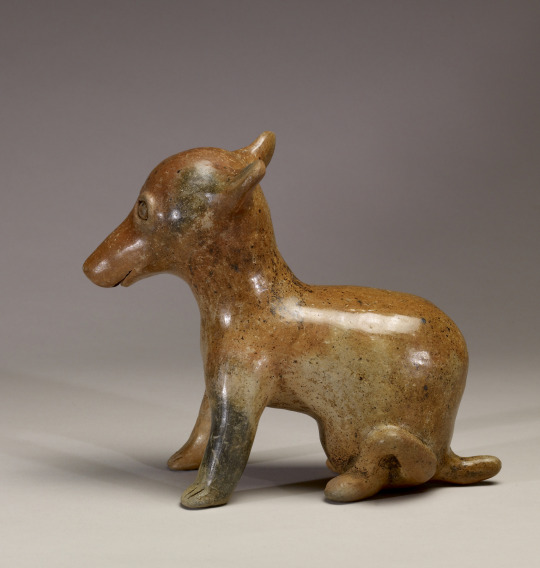

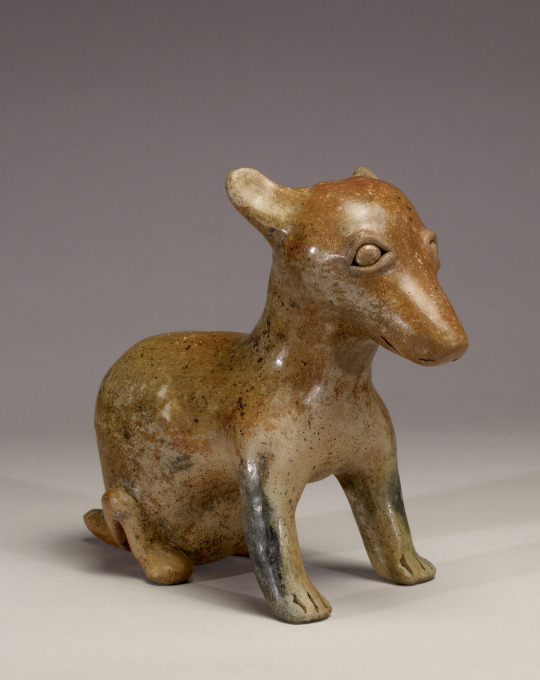
~ Seated Puppy.
Culture: Jalisco
Date: 300 B.C.-A.D. 300
Period: Late Pre-Classic
Medium: Ceramic buffware with ochre paint overall
#ancient#ancient art#history#museum#archeology#ancient sculpture#ancient history#archaeology#ancient america#Jalisco#preclassic#puppy#dog#seated puppy#300 b.c.#a.d. 300
4K notes
·
View notes
Text
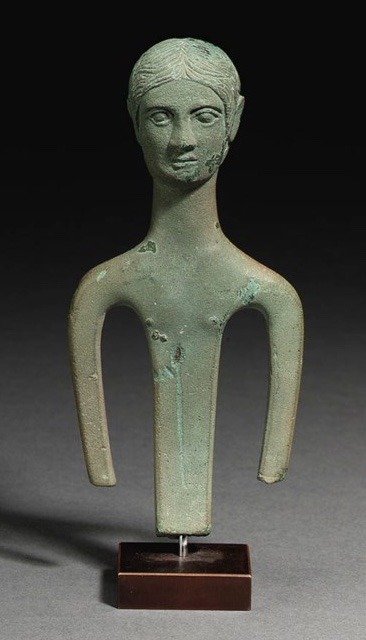
AN ETRUSCAN BRONZE FIGURE OF A YOUTH
circa 350-300 b.c.
With a large head with incised center-parted hair combed in front of the prominent ears, the youthful face with large almond-shaped eyes, long straight nose and small mouth, the long neck flattening into abstracted slab-like arms and an elongated torso with small modeled nipples.
#AN ETRUSCAN BRONZE FIGURE OF A YOUTH#circa 350-300 b.c.#bronze#bronze sculpture#bronze statue#ancient artifacts#archeology#archeolgst#history#history news#ancient history#ancient culture#ancient civilizations#etruscan history#etruscan art#ancient art
45 notes
·
View notes
Text
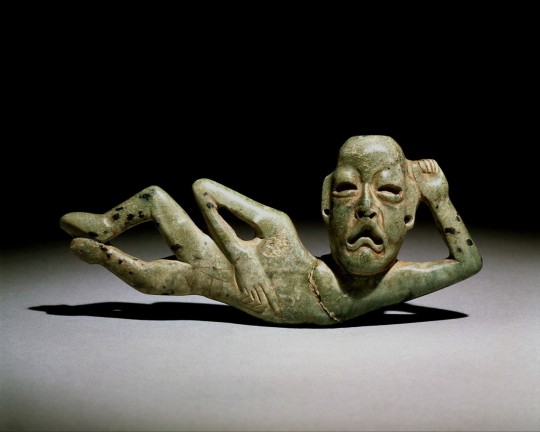
#~ Reclining Figure.#Culture: Olmec#Period: Middle Preclassic#Date: 900 B.C-300 B.C.#Medium: Serpentine#ancient
59 notes
·
View notes
Text
what if i turn into a love and deepspace account
#∞ ₒ ˚ omi's chats#it might happen but#the last time i wrote was 300 B.C. and i still have stuff i need to finish#YIKEEES#but xavier is actually my MAN
2 notes
·
View notes
Photo

❛ skeleton. || biography. || connections.
** lycan (delta volatile), 33, he/they
#me wastin time fiddlin around#also the connections page hasnt been updated since 300 b.c so#( about. )#a burnt child loves the fire. 」musings.
2 notes
·
View notes
Text

Etruscan Votive Statuette, 300–200 B.C. - Unknown artist, Terracotta, 21.6 × 13.2 × 7.5 cm
This statuette represents a male torso with an incision from the breast bone to the abdomen that exposes the internal organs. The dedicator perhaps suffered from stomach or intestinal problems. The model is a schematic version of the human anatomy rather than an exact replica, but the relative placement, size, and shape of organs is generally correct. Such medical knowledge of internal anatomy may have been gained from the observation of butchered animals or mortally wounded warriors on the battlefield.
2K notes
·
View notes
Text

Handle in the Form of an Animal Head
Japanese, c. 1000–300 B.C.
Only a handful of animals are represented in Jômon art. This piece is in the shape of the head of an animal; it looks like a horse from one side and a sheep from the other. The walls of the indentations are carefully modeled, not simply pressed into the clay with a stick. Judging by the curved back surface, it seems likely that this head came off of a vessel and was perhaps a handle that sat on the rim (with the curved surface at the back forming part of the interior wall of a jar).
247 notes
·
View notes
Photo

Unknown, God’s Wife, Tagerem, Ptolemaic Dynasty, Egypt, 300–250 B.C.
Limestone
2K notes
·
View notes
Text

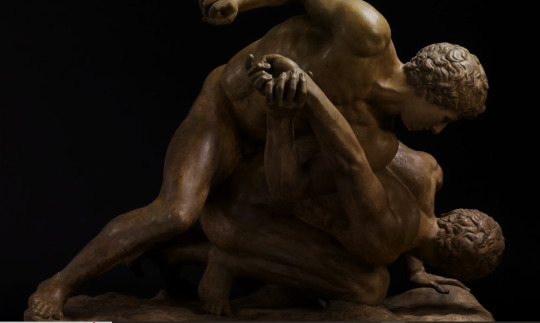
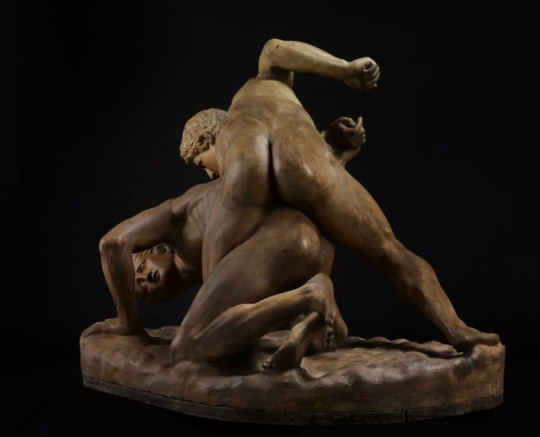
The Wrestlers, Pergamene school, 379-300 B.C
#art history#art#ancient greece#aesthethic#greek art#statue#sculpture#wrestlers#pergamene school#lysippus#royal academy of arts#uffizi#homoerotic art#classic art#classicism#antiquity
220 notes
·
View notes
Text
Ink!Sans Cultural Character Coding
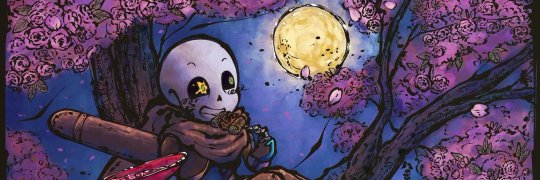
art by @/sakuramochi64 on twitter
Disclaimer!
This post is meant to present and analyse obvious and obscure East Asian (Jpn-Chi) ethnic and cultural influences on Ink!Sans character.
If any of the material in this essay is incorrect and/or considered morally offensive, please contact me!
Ink!Sans by @comyet
↓↓↓↓↓↓↓↓↓↓↓↓↓↓↓↓↓↓↓↓↓↓↓↓↓↓↓↓↓
/Despite the fact that Ink is a non-human monster skeleton character, he is often portrayed with human-like traits and characteristics that range between a bunch of topics. One of them that's portrayed as very predominat to his character is his etchnic cultural background/inspiration. Again, this post is meant to analyse and to discuss such inspirations and how it affects his character./
.
.
.
INSPIRATIONS
According to Ink's creator, Comyet, the concept of Ink!Sans was conceived by a Japanese and Chinese ink calligraphy brush. These are known as Fude brushes (筆) and Xuan brushes (宣笔 Xuān bǐ) respectively. This ultimately inspired his ink abilities and powers, just like his concept of being an 'artist' (In simple words, it inspired Ink as a whole).
'The history of ink brushes and the ink material is a long and complicated journey to cover, but it's important to know that these were invented in ancient China around 300 B.C (traditional Chinese: 毛筆; simplified Chinese: 毛笔; pinyin: máo bǐ) and are used in a vast variety of East and Southeast Asian countries, like Korea; Vietnam and Japan.
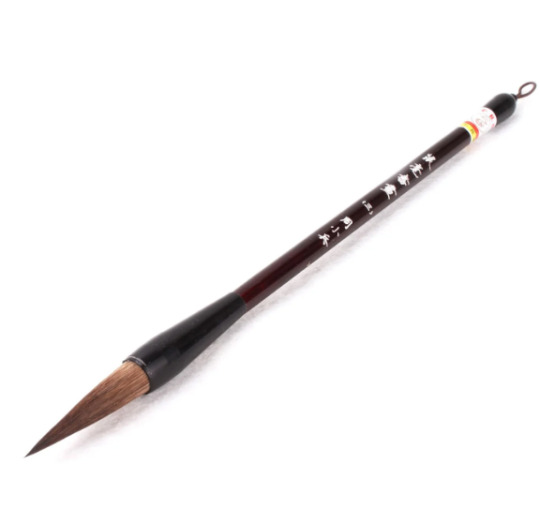
example of the brush Ink!Sans was inspired by.
At glance, ink (the material) is an enduring medium that still surrounds society till this day and it's used in multiple cultures across the world.
Writing with ink calligraphy brushes are common in the Europe and the Middle East as well, but the material was crafted of iron salt and oak galls. When written, ink is often a dark color but fades to brown tones of rust'. Such phenomenon was detectable in the Middle Eastern Bible manuscripts and even ancient European literature as an example.
Ink!Sans was based of the ink material created in East Asia, most commonly made with carbon-base black substance, which preserverd the dark coloration even after hundred of years.

↑ Example of an ancient Japanese painting, such arts are called 'Sumi-e' (Japanese, 墨絵) or ' Shuimohua' (traditional Chinese,水墨畫).
Unlike iron gall ink, carbon based inks are still very common to this day.
'Throughout the long history of East Asia, writing with ink was a very important ability to have. The Materials were made with precision, long traditions of training in calligraphic skills were developed, and writing and literacy were often wrapped up in questions of social status and class.
Although the development of major Chinese calligraphic scripts was completed by the fourth century, the art of calligraphy continued to evolve over the millennia. Master calligraphers with years of training and dedicated practice were recognized for their personal styles, and later generations of artists often adapted brushstrokes and designs to their own style. This stylistic evolution of scripts continues to enliven Chinese calligraphy to the present day.
Calligraphy was an important mark of personal learning and aesthetic sensibility in Japan. Portable, lacquered wood boxes were designed to hold an inkstone and water dropper in the base, with trays to hold writing brushes and solid ink sticks. Inkstone boxes (硯箱,suzuribako 'ink stone box' ) could be easily carried to a pleasant location, even outdoors in fine weather, to write correspondence, diary entries, or poetry.'
Fun fact: Ink's font 'Note This' is inspired by such ancient writing.

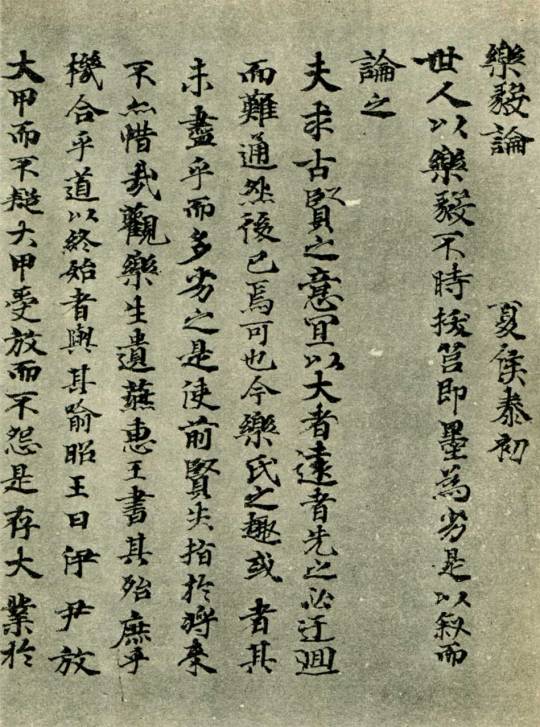
Example of Ink's canon speaking font and Japanese calligraphy (書道, calligraphy)
'However, when it comes to the subject of painting with the material, different schools of painting existed in China, the scholar-painters of Song-dynasty China generally preferred ink-based paintings over the more colorful, pigment-filled paintings produced historically and at the painting academy. Chinese painting manuals and commentaries from the Song (Sung) and Yuan dynasties (rarely mention pigments, possibly because it was assumed a painter’s skill shouldn’t depend on the use of colors.
Japanese artists are known for using media appropriate for the subject matter. Images depicting traditional Japanese narrative tales were typically rendered in opaque colors with outlines created in ink and later obscured by color overlay. Ink monochrome was closely associated with Chinese styles, particularly those transported to Japan via Zen Buddhism. Ink-based forms created with modulated strokes and layered washes suggested introspection and spiritual exploration.'
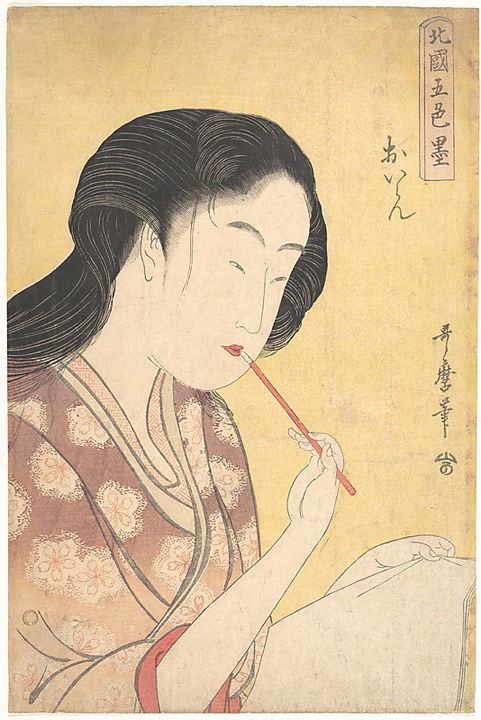
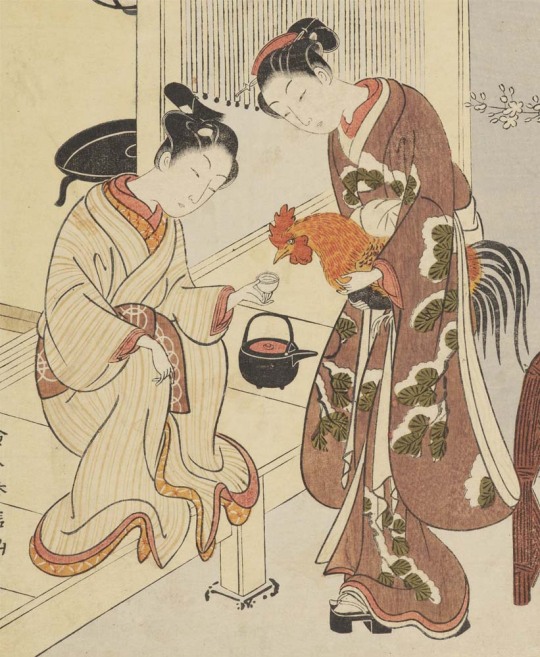
Ancient Japanese paintings that uses dull colors and ink outlines.
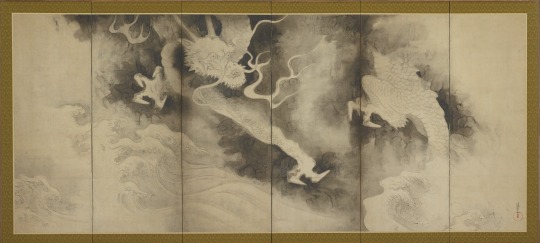
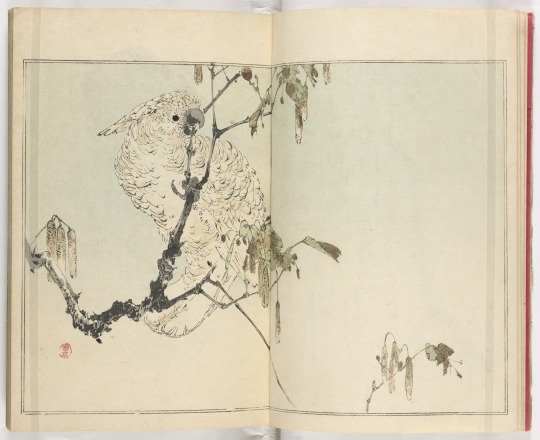
Exhaustive examples of ancient Ink paintings. Dragons and Clouds 雲龍図屏風 (左隻)and Seitei kachō gafu 省亭花鳥画譜
.
.
.
DESIGN
Also clarified in an ask on her main blog, Comyet describes that traditional Japanese clothing inspired Ink's 2020 outift redesing, such inspirations are very obvious in first and second analysis.
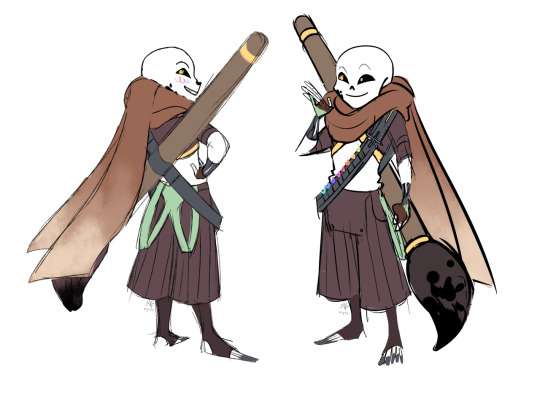
Ink!sans reference sheets for the 2020 design, which can be found in Ink's official F.A.Q
Starting off, the pants.
Ink's pants were inspired by Hakama pants (袴), a traditional Japanese garment designed as a skirt-like pants often worn over any type of kimono. His pants seems to be inspired by umanori (馬乗り)Hakamas, whose had a division in the middle and often used in horse-riding activities.

Example of a Hakama.
The Hakama is a wide pleated pants (seven pleats, five in front and two behind), with a rigid backrest (腰 板,koshi ita) placed at the level of the lumbar region. It is tightened with four straps, on the left and on the right, as well in front as behind.
Historically, the origins of the Hakama dates back to the Sui and Tan dynasty were this garment was worn by the Chinese imperial court. Later, the Hakama exported itself to Japan during the Kamakura period (1185 to 1332) and became a traditional garment for the upper classes of Japanese society as well as for samurai warriors who wore it over a kimono (Hakama-shita).
During the history of Japan, the Hakama took on different styles and was mainly made for men, although in the beginning it was a unisex garment. During the Asuka and Nara era (6th to 8th century), the Hakama came in two versions. The first one was open on the front and was tied on each side of the waist with two straps. The second one was open on the left side and closed on one side only.
During the Edo period, the Hakama was worn by the nobles as a complement to the outfits of the time such as the noshi and the kariginu (狩衣; a sleeveless jacket with very pronounced shoulders). Very functional, these pants were also adopted by samurai warriors who usually wore them as Kamishimo (上下/裃). It is a combination of kimono, Hakama and kataginu. When the warrior visited the shōgun, he wore a Hakama called naga-bakama which greatly restricted his movements.
Edit:Currently, hakamas are both worn by men and women.
However, under the scarft, Ink also seems to use a jacket that features a collar that has striking similarities to a Mandarin collar (or Mao collar)

Ink!sans reference sheets for the 2020 design, which can be found in Ink's official F.A.Q
Mandarin collars originated in ancient China and were worn by Qing-era bureaucrats.

Picture of a Chinese man in a traditional Mandarin collar (early 1900's)
These are short, stand-up collars and sometimes fasten in the center with a small hook. Such collars are still used today for both fashionable and practical reasons. One example of modern usaged of the clothing is seen in the U.S Amry combat uniform, that features a stand-up collar of Chinese origin.

Picture of the U.S Army combat clothing
Regarding of color palette, Ink!Sans redesign uses soft but dull colors and a sinple silhouette and fabric for the outift, such design choises are similar to male kimono's dressing codes which uses dull colors (like dark blue, grey, green and occasionaly brown). Male kimonos are always more simple in design compared to female kimonos.
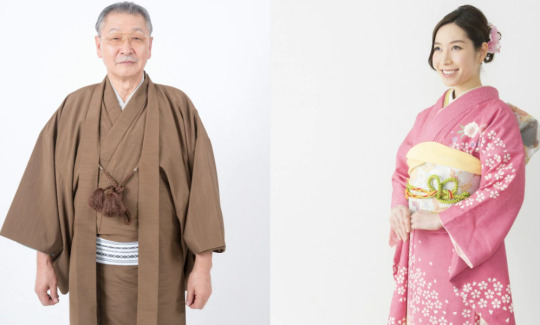
Photo that shows the difference of kimonos used by men and women
Although not specified, Ink seems to wear brown thigh-high socks, also known as 'tights' under the outfit. Japan has a long-standing cultural tradition of wearing such piece of clothing, this trend is particularly popular among young people and is often associated with the "gyaru" subculture, which emphasizes fashion, beauty, and individuality. Additionally, thigh-high socks are often worn with school uniforms, and are considered a symbol of youth and innocence. Additionally, it is also considered fashionable and trendy in Japan, and you can see many young people wearing them.
In regards of physical appearance, Ink also seems to follow ancient Japanese and Chinese beauty standarts, specially one's targeted towards women.
In ancient japan, specially towards the Nara (奈良時代, Nara jidai), Heian (平安時代, Heian jidai) and Edo period (江戸時代, Edo jidai) the beauty standarts for Japanese women were of those with slim eyebrowns, flat oval face shape and narrowed eyes.
Such attributes can be observed on Ink!Sans apperance.

Visual representation of old Japanese beauty standarts
/Keep in mind that some of such standarts presented are now out of fashion due to the westernization of asian countries. Specially regarding eye shape/
.
.
.
MUSICAL THEMES
Ink!Sans has a long history of being associated with East Asian music, specially those of Japanese origin.
Themes that comyet associated with him includes, 'Code Wu- Asia River Album 江水/Asia River' ( post can be found here), 'Dullahan under the willows' and 'Futatsuiwa from Sado (二ツ岩で佐渡) both from the japanese game 'Touhou'. (post can also be found here.
He's also associated with East Asian musical instruments, something quite noticeable in Ink!Sans theme for the the web-series 'Underverse'. Such theme is called 'Brushwork'.
The theme starts with an instrument similar to a Shamisen (Japanese-三味線) and a Guzhen (Chinese-古筝) and also uses a traditional flute.
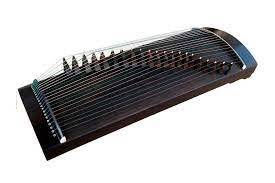
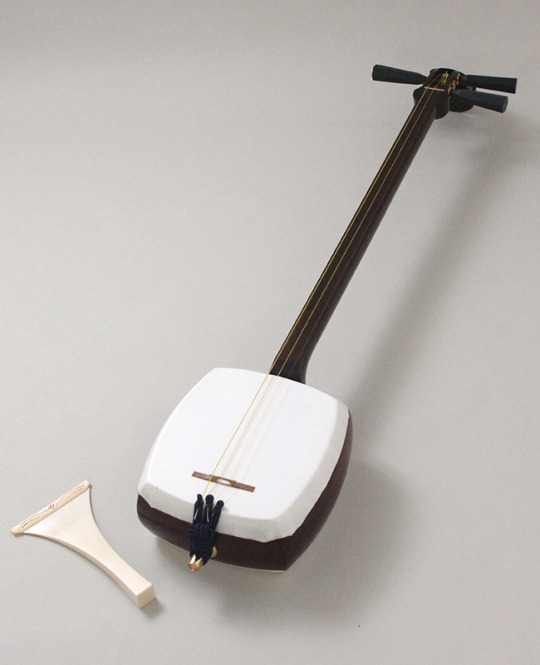
Photo of a Guzhen and a Shamisen, respectively
.
.
.
TRIVIA
On Underverse's opening for season 2, Ink!Sans can be seem between a field of Sakura trees or Cherry Blossoms (桜).
Cherry blossom trees are an icon of Japan. Some people even call the cherry blossom Japan’s informal national flower. The Japanese school year starts in April, during cherry blossom season. The flowers symbolize good luck, love, and springtime. Since they bloom for such a short time, cherry blossom trees also represent human mortality. They remind us how short and precious life is.
In the same series, Ink is also drawn in a Sumi-e inspired style for the 'Soulless Heart Instrumental' video. Such artwork features Japanese writing in black ink.
Ink's canon instrument is the flute. Although invented in ancient germany, the flute is highly associated with East Asian cultures and it's music, chinese and japanese culture are the main ones . Other than that, Comyet already made a connection to Ink's asian influence and the instrument itself.
According to research made by the University Microfilms International (UMI) affirms that the moderny performance and melody of the instruments has clear East Asian roots, mainly from Chinese and Japanese style of music.
'The flute is a particularly appropriate instrument for such a
study because of its versatility of pitch and timbre, the latter being
one of the most important elements in Eastern music; it is capable of
'pitch-bending' and infinite changes in tone quality which are impossible
to achieve on instruments of set pitch.
The flute music selected for stud/ shows varying degrees of Eastern
influence. Depending on the nature of the composition, the Eastern
elements may be extremely subtle and difficult for the untrained to
decipher; in other instances the composer makes clear those sounds or
concepts with Eastern roots, either through accompanying explanation or
within the context of the music.'
Sources
1.National Museum of asian art (materials & techniques. Ink section)
2. Asian Brushpaper (an-overview-of-chinese-ink-history)
3. Wikipedia (wiki Hakama-pants)
4. Aikido Journal (Hakama-101)
5. Wikipedia (Mandarin-collar)
6. Kirrin finch (What-is-a-mandarin-collar)
7. University Microfilms International (UMI) (east-asian-presence-in-modern-flute-music)
#ink sans#inktale#undertaleau#utmv au#ink!sans#utmv#inksans#undertale#east asian#au sans#sans au#cultural inspiration
278 notes
·
View notes
Photo

“Flame-Rimmed” Cooking Vessel (Kaen doki), Jomon period (ca. 10,500 B.C.–ca. 300 B.C.), Japan
415 notes
·
View notes
Text

~ Mirror.
Date: 300-275 B.C.
Culture: Etruscan
Medium: Bronze
#ancient#ancient art#history#museum#archeology#archaeology#ancient history#etruscan#mirror#bronze#300 b.c.#275 b.c.
1K notes
·
View notes
Text

Roman Funerary Altar Found in Italy
Buried in a rocky riverbed in northern Italy sat a forgotten ancient artifact. The artifact certainly wasn’t intended to be forgotten. It was too big and ostentatious for that. But the waterway and the passing centuries had prevailed over the ancient stone.
Not anymore.
Ervino Silvestri spotted the ancient artifact in the gravel of the Torre river in San Vito al Torre and alerted officials, the Superintendency of Archaeology, Fine Arts and Landscape of Friuli Venezia Giulia said in a Feb. 22 news release.
Archaeologists excavated the riverbank and unearthed a massive block of carved limestone. They identified it as an ancient Roman funeral monument.
The monument weighed about 13,000 pounds, archaeologists said. One corner of the rectangular monument was chipped, but the rest was generally intact.
One end had a carved figure of Erotes holding a torch and poppy flower, symbols of eternal sleep or death, officials said. A photo shows the figure inside a carved frame.

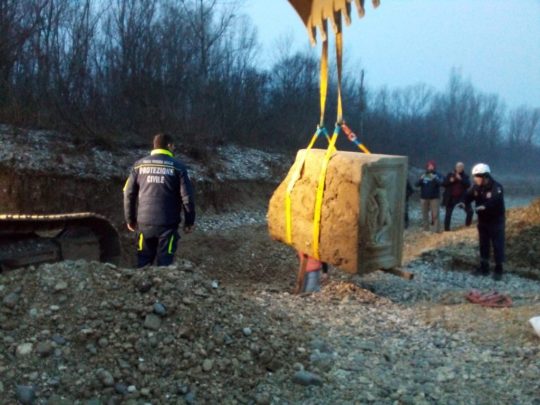


Erotes was a figure of ancient Roman mythology comparable to Cupid or Eros, according to Britannica. Although generally the god of love, Eros could represent different symbols in different contexts.
Archaeologists also found an inscription on the ancient Roman monument but did not provide a translation.
The decoration style indicated the monument was from the high imperial era. Archaeologists did not give a specific date range, but, according to National Geographic, ancient Rome’s imperial era lasted from 27 B.C. to 476 A.D., peaking in 117 A.D.
The stone monument was so heavy that an excavator was needed to move it, officials said. Photos show this process. The artifact was placed in a temporary shelter for cleaning and further study.
Excavations of the gravel riverbed also uncovered a stone urn, a limestone carving of a man’s face, other limestone artifacts, bricks and tile pieces, archaeologists said. Photos shared by officials in a Feb. 22 Facebook post show some of these finds.
San Vito al Torre is about 300 miles northwest of Rome and near the Italy-Slovenia border.
By Aspen Pflughoeft.
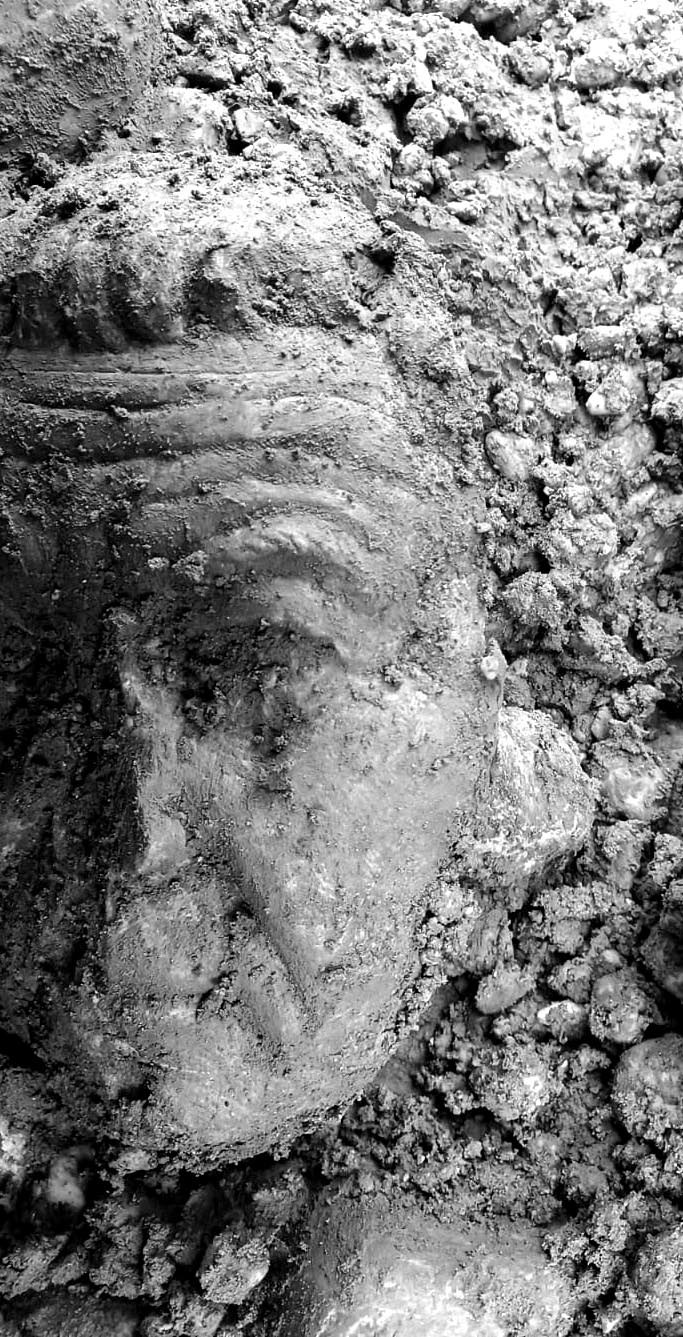
#Roman Funerary Altar Found in Italy#Torre river in San Vito al Torre#carved limestone#Roman funeral monument#ancient artifacts#archeology#archeolgst#history#history news#ancient history#ancient culture#ancient civilizations#roman history#roman empire#roman art
68 notes
·
View notes
Photo

Statue of a queen or goddess
Egyptian Hellenistic Period (Ptolemaic Dynasty) 300–200 B.C.
mfa boston
158 notes
·
View notes
Text
Figurine from Georgia (South Caucasus), c.300-200 BCE: this figurine was found buried in a pit beneath the ruins of an ancient temple; it was decorated with gold jewelry, wrapped in a burial shroud, and then placed in its own special "grave"
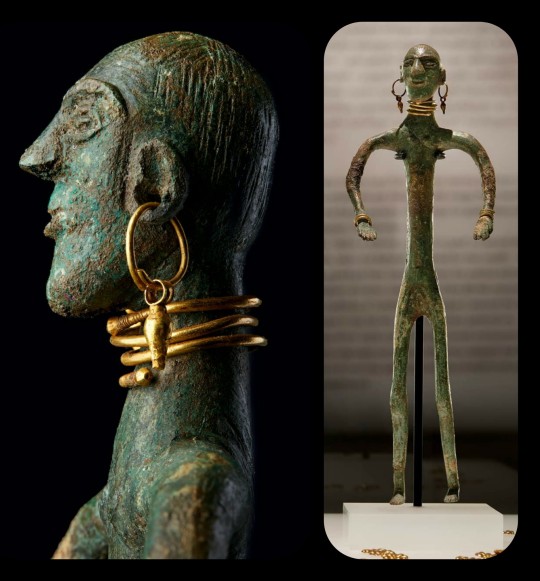
This is one of seven figurines that have been unearthed from similar burial pits throughout the city of Vani, which once served as the cultural, religious, and administrative center for the Kingdom of Colchis. Each figurine was crafted from bronze or iron, decorated with pieces of gold jewelry, wrapped in a special shroud, and then buried in a small "grave" that had been dug beneath (or near) one of the many temples that once stood throughout the city.
From The Golden Graves of Ancient Vani:
... other discoveries at Vani have shed light on Colchian culture. Most compelling are seven metal figurines, dating to 300–200 B.C., that have been discovered both in and near sacred structures at Vani. Adorned with gold jewelry and apparently wrapped in decorated garments, the figures were carefully buried in a way that seems to mimic the human burials at the site. Their precise function remains unclear, but they probably related to local religious and funerary customs.
And the Fitzwilliam Museum (which exhibited some of the artifacts from Vani back in 2008) adds:
Distinct local ritual practices are suggested during [the 3rd century BCE] as can bee seen from the four bronze and iron figurines displayed in the exhibition. These were discovered on the city’s upper terrace and were all buried in or near a sanctuary; this placement may well indicate a religious or funerary function for the figurines. The example illustrated here was placed between two terracotta tiles that were buried in a pit cut into the bedrock, thus mimicking contemporary human burials.
The figurine has a head with disproportionately large features, a low sloping brow, and an elongated torso with bowed arms and stiffly rendered legs. Most striking is its lavish gold jewellery, some of which reflects types worn by those buried at Vani. In addition to gold earrings, a torque (neck ring), and bracelets, five gold rosettes appear to have been strung around the figurine’s head and several pendants were found in its chest area.
The form and detail of their jewellery date the four figurines to the 3rd century BC. Their precise function, surely of local religious nature, still remains a subject of discussion. However, it is worth noting that the intriguing practice of burying such figurines in a ritualistic manner appears to be specific to Vani during its phase as a sanctuary city.
During antiquity, the Kingdom of Colchis covered the Western half of what is now the nation of Georgia, located in the South Caucasus. Colchis was famous for its talented goldsmiths, and it ultimately came to be known as the homeland of the fabled Golden Fleece -- the destination of Jason and the Argonauts, according to the Greek Argonautica.
Sources & More Info:
J. Paul Getty Museum: The Golden Graves of Ancient Vani
Fitzwilliam Museum: Ritual
Fitzwilliam Museum: From the Land of the Golden Fleece
Institute for the Study of the Ancient World: Wine, Worship, and Sacrifice
Journal of Greek, Roman, and Byzantine Studies: Vani: An Ancient City of Colchis (PDF download)
#archaeology#history#artifact#ancient history#art#vani#colchis#kolkheti#sakartvelo#georgia#caucasus#ritual artifact#religion#mythology#anthropology#ancient greece#crafting#sculpture#paganism#ancient ruins#ancient temple
40 notes
·
View notes
Text

Head of a lion, Late Period–Ptolemaic Period, 400–300 B.C.
Gypsum plaster,
H. 42.5 x W. 40 cm (16 3/4 x 15 3/4 in.)
On view at The Met Fifth Avenue
#art#history#design#style#archeology#sculpture#antiquity#head#lion#egypt#late period#ptolemaic#gypsum#plaster#the met
26 notes
·
View notes